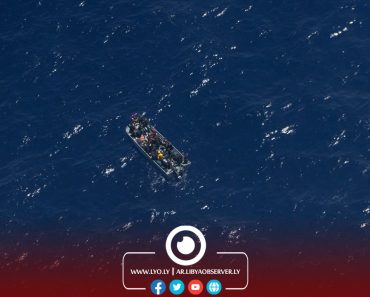A recent discovery by marine archaeologists in the waters of the Caribbean has filled in some gaps about how the slave trade functioned in that part of the world several centuries ago. The researchers have now confirmed that two shipwrecks discovered off of Costa Rica’s southern Caribbean coast were Danish slave ships, which had been lost at sea while traveling through the region more than three centuries ago, transporting human cargo from across the Atlantic to support the infamous Trans-Atlantic slave trade of the Americas.
Follow the Yellow Brick Road
The ships in question were found off the coast of Cahuita National Park long ago, by fisherman who spotted them below the surface of the water in the early 1800s. It was long assumed that these ships were casualties of war, likely pirate ships that had been attacked to stop their depredations on shipping in the area.
However, a discovery that took place in 2015 in connection with the ships cast doubt on this assumption. These were yellow bricks seen in the wreckage, and these curious artifacts raised new questions about where the ships might have come from and about what type of cargo they might have carried when they were sunk.

Marine archaeologist and research professor David Gregory looking at piled yellow bricks on the seabed in Costa Rica. (National Museum of Denmark).
Eventually, it was determined the yellow bricks matched those that were known to have been produced in Flensburg, Germany in the 18th and 19th centuries. And these were not just any bricks, but a specialized kind ordered by Denmark for use in their homeland and in their colonies.
This identification was a clue, and another was found in a study of historical records. This revealed that two Danish slave ships were known to have been lost in the Caribbean near Central America in 1710: these were the Fridericus Quartus, which was destroyed by fire, and the Christianus Quintus, which somehow broke loose from its anchor and drifted out to sea, never to be seen again.
In 2023, Danish researchers from the National Museum and the Viking Ship Museum in Denmark arrived to carry out underwater excavations, hoping to verify that the wrecked ships were indeed the remains of the Fridericus Quartus and the Christianus Quintus . Concentrating exclusively on these the two vessels, they recovered a diverse set of artifacts, including pieces of charred timber, clay pipes, and more of the distinctive yellow bricks.
They ordered a laboratory analysis of the wooden artifacts, and this confirmed that the timber came from trees that had been cut down between 1690 and 1695 in Europe’s Baltic region (which was known to have supplied wood to Danish shipbuilders centuries ago). The clay in the bricks was found to have originated in southern Denmark, and the manufacturing technology used to make them was consistent with that used by 18th-century Danish brickmakers (who mimicked the approach of the Germans in Flensberg). As for the pipes, they matched Danish styles in use at the turn of the 18th century.

Excavated hole with visible bricks and wood from the shipwreck. (National Museum of Denmark).
After completing their analysis, the Danish archaeologists knew they had found what they had been looking for.
“The analyses are very convincing and we no longer have any doubts that these are the wrecks of the two Danish slave ships,” stated marine archaeologist and National Museum of Denmark researcher David Gregory in a press release.”The bricks are Danish and the same goes for the timbers, which are additionally charred and sooty from a fire. This fits perfectly with the historical accounts stating that one of the ships burnt.”
A Mutinous Crew and a Doomed Journey
The researchers’ study of the history of the ill-fated slave ships proved most enlightening. On their three-legged journey from Copenhagen to West Africa to Costa Rica, they experienced a number of difficulties. Danish records reveal that the crew of the Fridericus Quartus actually launched a rebellion against their captain during the ship’s voyage from Ghana to the Dutch colony of St. Thomas. Fearful of what was happening, but also thrown off course by navigational errors, the captains of both ships ultimately decided to land in Costa Rica in the hopes that order could be restored.
They ended up running aground near the southern Costa Rican district of Cahuita, and at this point a bad situation got even worse. The crew was afraid of being attacked by pirates or by local indigenous peoples, causing the previous rebellion to escalate into a full-fledged mutiny. Between the two ships there were approximately 650 survivors, which included both Danish sailors and African slaves.
“It’s been a long process and I’ve come close to giving up along the way, but this is undoubtedly the craziest archaeological excavation I’ve yet been part of,” said National Museum of Denmark marine archaeologist Andreas Kallmeyer Bloch. “Not only because it matters greatly to the local population, but also because it’s one of the most dramatic shipwrecks in the history of Denmark, and now we know exactly where it happened. This provides two pieces that have been missing from the history of Denmark.”

Marine archaeologists David Gregory and Andreas Kallmeyer Bloch with excavated ship timbers from a shipwreck in Costa Rica. (National Museum of Denmark).
The remarkable investigations that led to this new discovery were carried out jointly by the National Museums of Costa Rica and of Denmark, the Viking Ship Museum in Roskilde, the University of Southern Denmark, the Archaeological Commission of Costa Rica, conservation officials from the Costa Rican government, and the Centro Comunitario de Buceo Embajadores y Embajadoras del Mar, a Costa Rica-based NGO.
Top image: Danish ships sailing in and out of Fort Christiansborg, the largest Danish colonial settlement in Ghana and the major Danish port supporting the Trans-Atlantic slave trade (painting by George Webster, 1806).
Source: Public Domain.
By Nathan Falde







